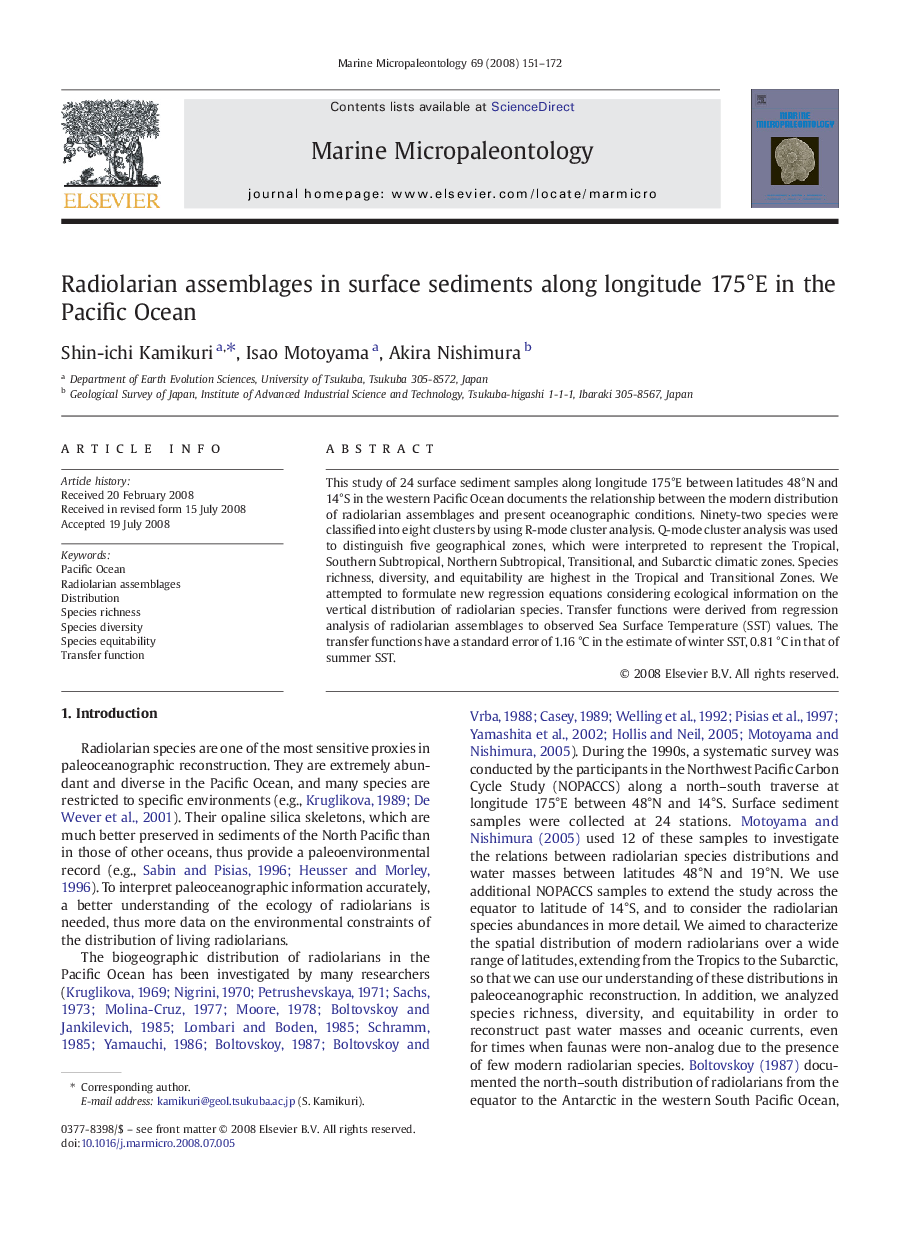| Article ID | Journal | Published Year | Pages | File Type |
|---|---|---|---|---|
| 4749175 | Marine Micropaleontology | 2008 | 22 Pages |
Abstract
This study of 24 surface sediment samples along longitude 175°E between latitudes 48°N and 14°S in the western Pacific Ocean documents the relationship between the modern distribution of radiolarian assemblages and present oceanographic conditions. Ninety-two species were classified into eight clusters by using R-mode cluster analysis. Q-mode cluster analysis was used to distinguish five geographical zones, which were interpreted to represent the Tropical, Southern Subtropical, Northern Subtropical, Transitional, and Subarctic climatic zones. Species richness, diversity, and equitability are highest in the Tropical and Transitional Zones. We attempted to formulate new regression equations considering ecological information on the vertical distribution of radiolarian species. Transfer functions were derived from regression analysis of radiolarian assemblages to observed Sea Surface Temperature (SST) values. The transfer functions have a standard error of 1.16 °C in the estimate of winter SST, 0.81 °C in that of summer SST.
Keywords
Related Topics
Physical Sciences and Engineering
Earth and Planetary Sciences
Palaeontology
Authors
Shin-ichi Kamikuri, Isao Motoyama, Akira Nishimura,
